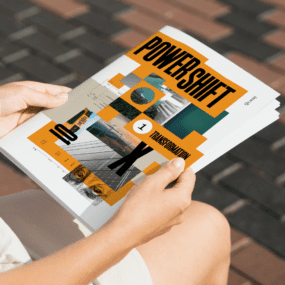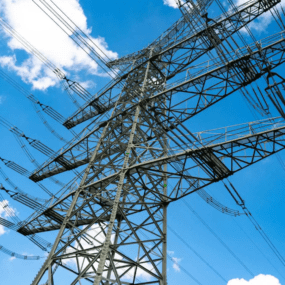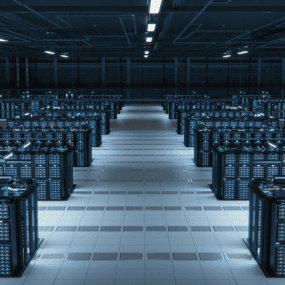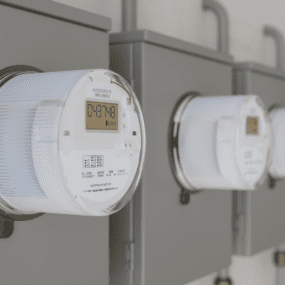5 Key Take-a-ways From the Latitude Frontier Forum
The Imperative of Time Varying Rates and the Consequences of Getting it Wrong

The Imperative of Time Varying Rates and the Consequences of Getting it Wrong

Sign up for our newsletter
Stay in the loop with all things GridX and beyond.
GridX COO, Scott Engstrom, joined Economist-at-Large, Ahmad Faruqui, and Latitude Media’s Stephen Lacey for Frontier Forum: How Utility Rate Design Can Make or Break The Energy Transition on June 13th. It was a robust and wide-ranging discussion, focusing on how emerging rate structures can and must help the grid manage the surge of distributed energy resources (DERs) and address mounting grid constraints.
These insights delivered during the Frontier Forum underscore the importance of innovative rates and the role of technology and consumer behavior in achieving a more balanced and efficient grid.
Here are our top 5 take-a-ways from the discussion. You can also catch up on the full conversation here.
1. Energy supply is fundamentally changing
The way energy is supplied is rapidly changing. The days of old where grid operators monitored and turned the appropriate knobs and fired up coal plants as needed, is no longer the path forward. Utilities won’t have the same process (or luxury) of adjusting supply easily with the emergence of wind and solar, let alone with more DERs and behind the meter devices in play.
In order to take carbon out of the energy supply, the need for meeting increased demand, in a way that’s never done before, is required to meet net zero goals.
2. Customer centricity should be a top priority
Utilities will need to find new ways to meet consumer needs while providing safe, reliable and affordable energy. As customer behavior becomes increasingly important to the energy transition, finding new ways to engage and influence that behavior needs to be a top priority.
Consumers with grid-connected devices will need to modify their behavior. By human nature, people respond to prices and programs that are in their best interest and ultimately benefit them financially.
In addition to serving the interests of the grid, utilities will need to put customer needs (and their satisfaction) at the center of each rate or program in order to have the intended effect. That is why utilities will need to show consumers that it’s in their best interest to shift load through marketing and outreach that emphasizes the impact of their decisions in dollars and cents.
3. Marketing the impact of rates is a non-negotiable
Investment in understanding customer wants and needs prior to implementing complex rates and programs is important in getting it right. But just as important as designing and analyzing the impact of the right rate, is making sure customers know what options are best for them.
It’s important to relate to customers in terms they understand and that drive action. Utilities should utilize the language of savings in their marketing efforts through an array of communication channels and efforts.
Energy providers can learn a lot from other industries and utilities that are getting it right when it comes to marketing rates and programs. You can’t tell people how to live their life. But, you can design around their lives and make conscious efforts to educate and inform consumers of available rates and programs that benefit them.
Take the retail environment for example. They advertise cost savings (70% off!) and don’t lead with the highest price. Tell consumers, on a personalized level, what they can save by switching rates or enrolling in available programs. Marketing the price differentials of time-of-use (TOU) and dynamic rates and programs makes customers comfortable with their decisions and the confidence in knowing they are on the right rate.
4. Time-varying rates can create a win-win for customers and utilities
Effective deployment of time-varying rates, like TOU, is a win-win for utilities and customers in achieving decarbonization targets and ushering in our clean energy future. Utilities can reduce carbon emissions through load shift and customers can save money on their bills. TOU is designed to shift load to off-peak times (reducing costly and dirty reliance on coal-fired plants) allowing utilities to realize system benefits and help customers save money.
TOU and dynamic pricing models can and have worked for several utilities. When considering rate designs and programs, there needs to be a significant motivating factor to get consumers to change their behavior. In the adoption of TOU rates and dynamic prices, differential matters.
It’s a data-backed and validated concept…people will respond to price; the bigger the savings opportunity the more reduction in peak load. Dr. Ahmad Faruqaui noted it’s okay to have default and mandatory TOU rates but it is important that the price differential be significant and the peak periods can’t be too long in order to be successful.
5. DERs will require utilities to have agile rates
DERs have and undoubtedly will continue to change the energy landscape. We are embarking on a journey beyond the smart thermostat with batteries, electric cars and heat pumps becoming more prevalent. Utilities and customers will need to look beyond the old ways of thinking and adapt to this ever-changing landscape to meet customer needs and the needs of the grid.
As a result, utilities should embrace the digital transformation of utility ratemaking with programs that emphasize new pricing structures, real-time pricing and prices-to-devices control mechanisms. The need to quickly adapt rates and programs to changing scenarios with personalized price signals and enhanced communications will be required to keep consumers informed, engaged and most importantly, influence action.
Time-varying and complex rate structures are imperative in the management of an ever-evolving grid. For the in-depth conversation and more insights on the how, why, and what of emerging rates and pricing strategies, watch the full conversation, Frontier Forum: How Utility Rate Design Can Make or Break The Energy Transition.




